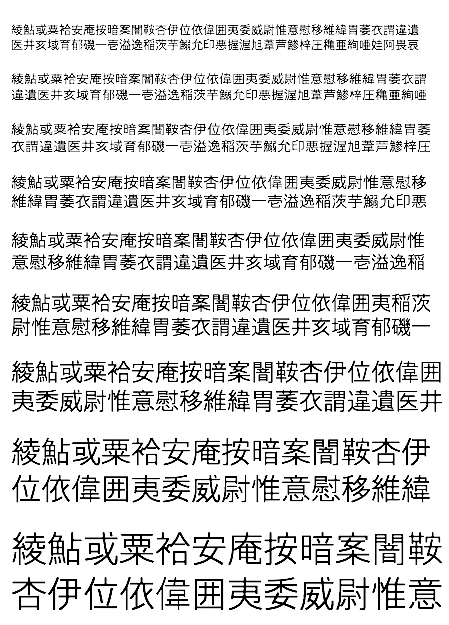|
George Gu

Toronto-based George W.L. Gu worked in a publishing house in Shanghai for eight years as assistant editor and graphic designer. In 1991, he received his Masters degree from the Musashino Art University in Tokyo where he wrote a thesis on digital typography. After graduation, he worked in the design center of Sharp for four years as the head of the font team and subsequently as an adviser. Since 1988, George has been developing and designing CJK Multiple Master display typefaces. In 1998, he single-handedly completed a set of JIS X 0208-1990 MMT, which contains 25,420 Kanji and Kana symbols. He lives in Toronto since 1993. Speaker at ATypI 2012 in Hong Kong: Hanzi: The Past, Present, and Future. In his Hong Kong talk, Gu basically summarizes the history of CJK font design. Here are the main points: - 1807: Robert Morrison mixed Chinese wooden types with English metal letters for printing.
- 1858: William Gamble (1830-1886) was the first to electroplate Chinese type for printing. In modern printing, we call the typefaces, Hong Kong and Shanghai types, respectively.
- Gamble was invited to Japan and taught the locals how to make hot type. In 1912, Japanese type designers purchased the Linn Boyd Benton machine from the U.S., which allowed them to transition from mould-cutting by hand to large-scale production by machine.
- Ishii Shigekich and Morisawa Noboo, inspired by Monotype, invented the photo-typesetting machine. Nevertheless, due to the vast quantity of Hanzi characters in use, the high cost and time-consuming process of transforming these types from hot metal onto high precision photo-typesetting machine is an ongoing limitation.
- Gu lists the limitations of Far East font designs: Flaws resulting from sizing fonts, Uneven alignment, Disruption of normal spacing, Loss of aesthetics in the development of type families.
- Lu concludes with font production methods that are best suited for use in printed materials, electronic devices, and the internet: (1) Stroke typefaces such as Dyna Font (made in Taiwan), (2) Typefaces that are partitioned such as the Paris and Berlin types, ca. 1836-1860, (3) Use of Fontographer's EM function to alter font weights, (4) Use of MMT technology.
|
EXTERNAL LINKS
George Gu
MyFonts search
Monotype search
Fontspring search
Google search
INTERNAL LINKS
Type design in China ⦿
Type designers ⦿
Type designers ⦿
History of type ⦿
The Canadian type scene ⦿
|

